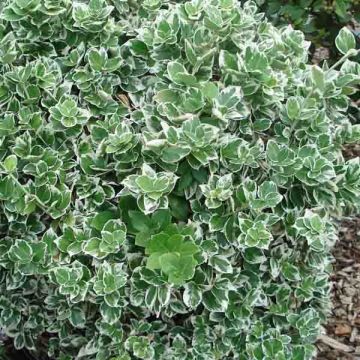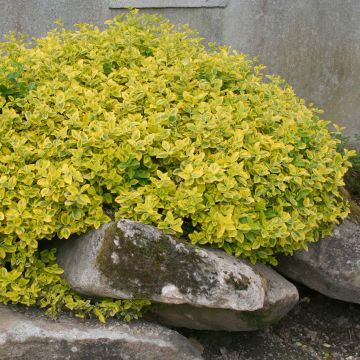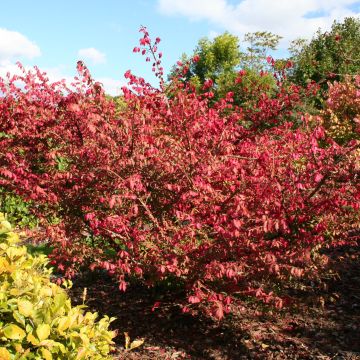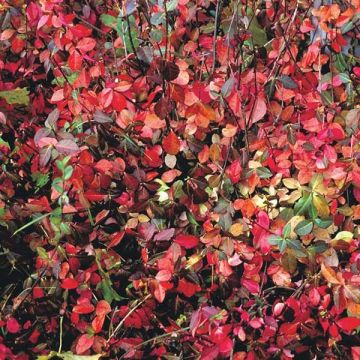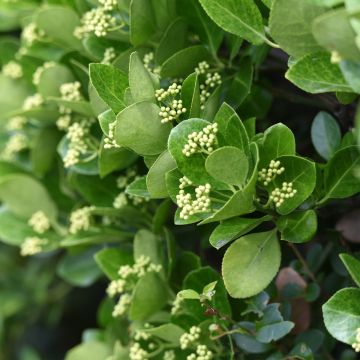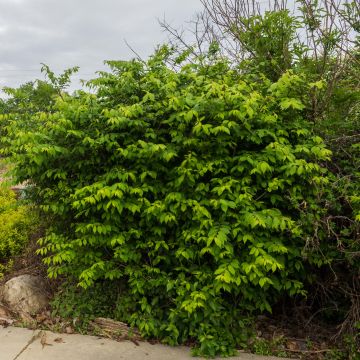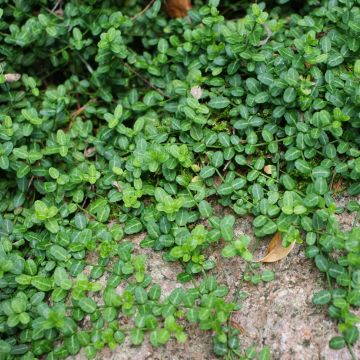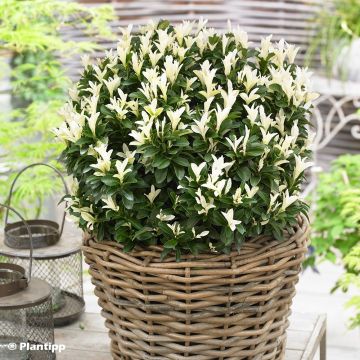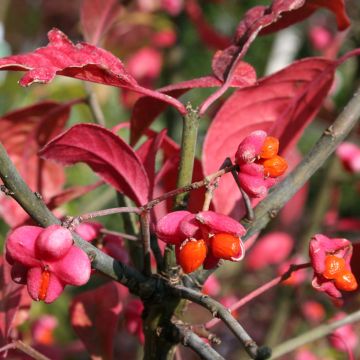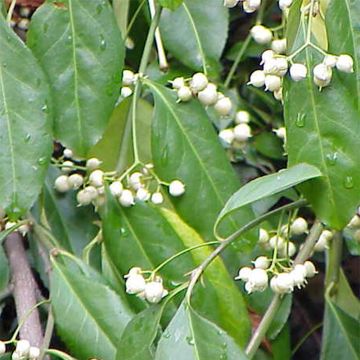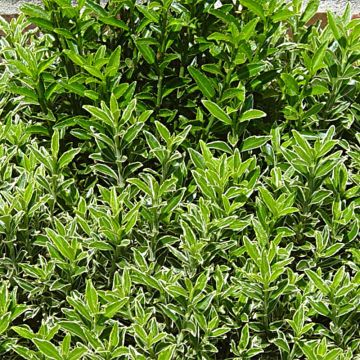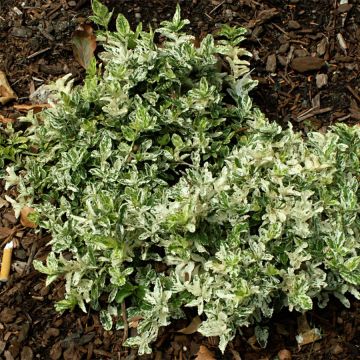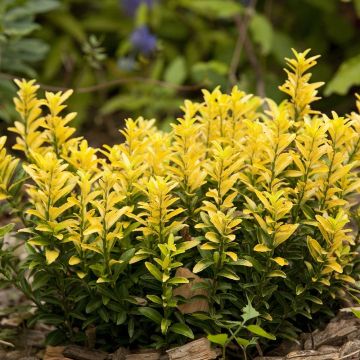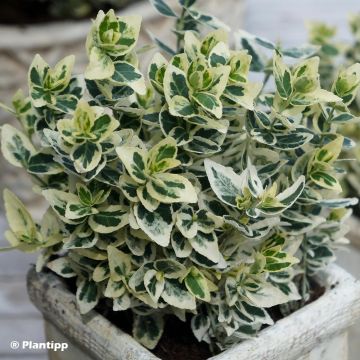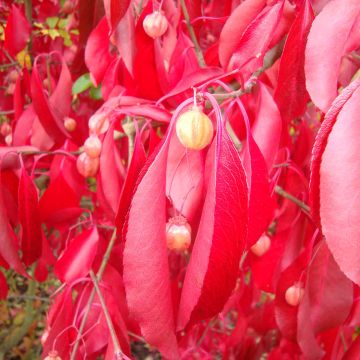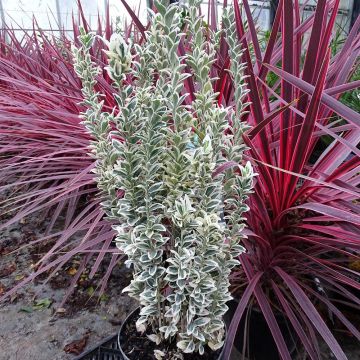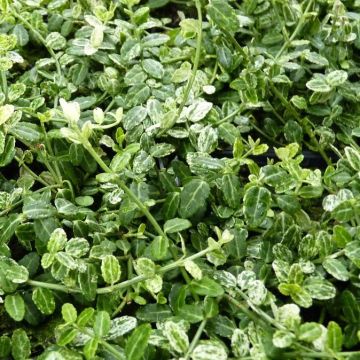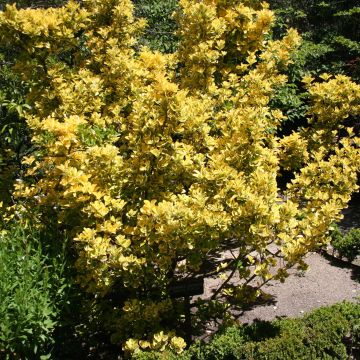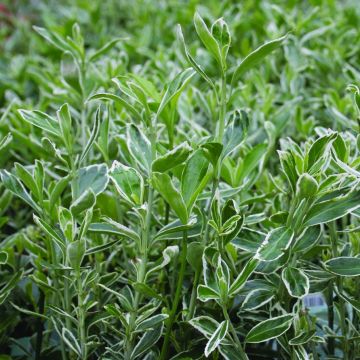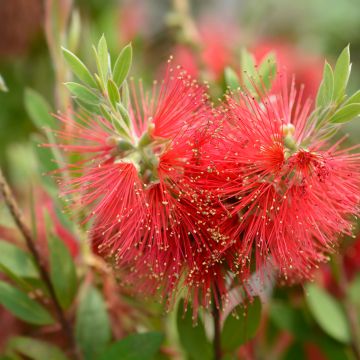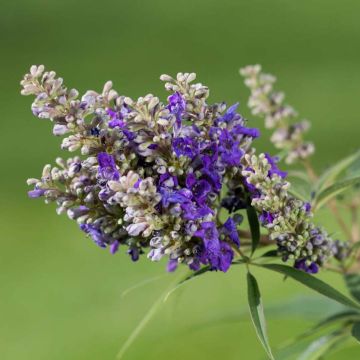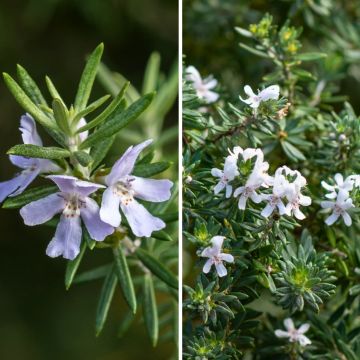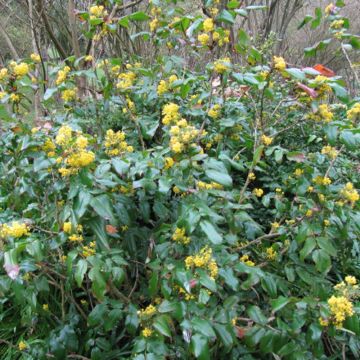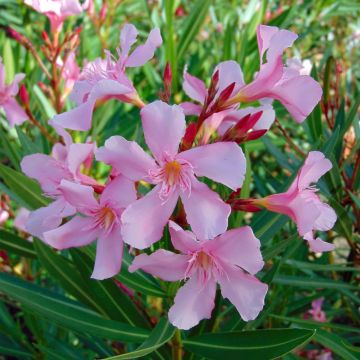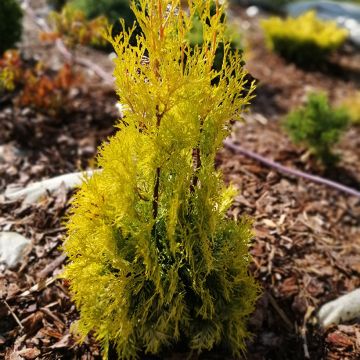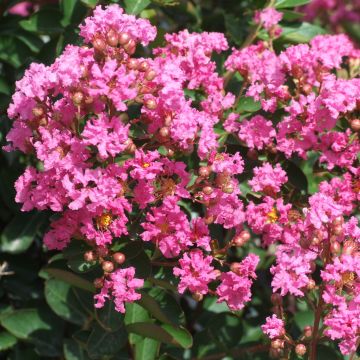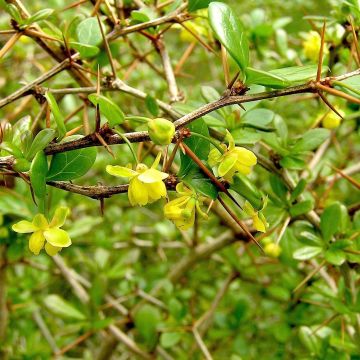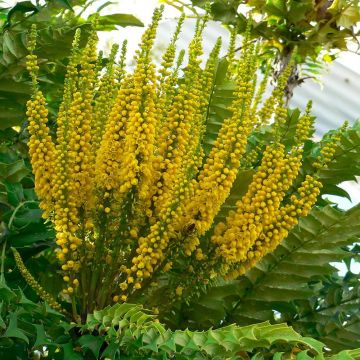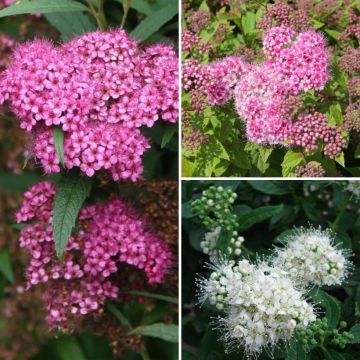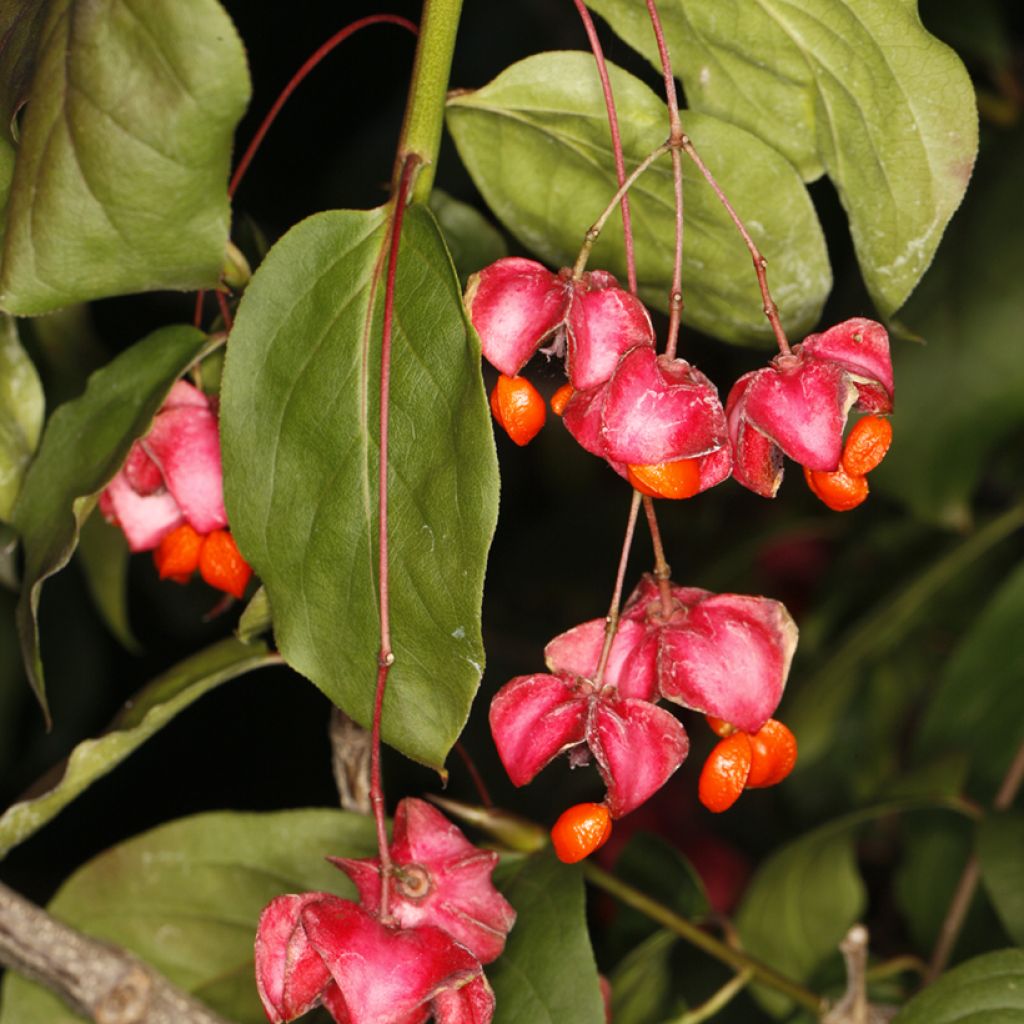

Euonymus latifolius
Euonymus latifolius
Euonymus latifolius
Broad-Leaved Spindle, European Spindle
Why not try an alternative variety in stock?
View all →This plant carries a 24 months recovery warranty
More information
We guarantee the quality of our plants for a full growing cycle, and will replace at our expense any plant that fails to recover under normal climatic and planting conditions.
Oversize package: home delivery by special carrier from €6.90 per order..
Express home delivery from €8.90.
Does this plant fit my garden?
Set up your Plantfit profile →
Description
Euonymus latifolius is a deciduous spindle tree. This medium-sized bush bears large leaves that turn red and then purple, while its small fruits ripen to a deep pink with a bright orange seed. It is undemanding and very robust, it will simply be superb in a shrub bed or an informal hedge.
Euonymus latifolius is native to central and southern Europe, western Asia, and Algeria. It is a perfectly cold-resistant bush, well adapted to limestone and clayey soils, with relatively low water requirements. Like all spindle trees, it belongs to the Celastraceae family.
The broad-leaved spindle tree can reach a height of 4.50 m and a spread of 3.50 m. It has a rounded and bushy habit. This bush often produces several trunks from its stump. Its bark is smooth and grey, becoming slightly fissured with age. Its foliage is deciduous, appearing in spring and falling in autumn. The leaves are opposite on the branches, simple, wide, measuring from 5 to 12 cm in length. They are oval or elliptical with a slightly toothed edge. Their colour is a bright green during the growing season. They turn spectacularly red and purple in autumn before falling. The flowers, which appear in May-June, are small and green, usually grouped in inconspicuous inflorescences. The fruit is a pink or bright red capsule at maturity, opening to reveal bright orange, highly contrasting seeds. They are beautiful but toxic to humans. However, they are a source of food for birds and other small animals, even in winter.
Euonymus latifolius is easy to grow and thrives in any well-drained soil, in a sunny exposure that will enhance its autumn colours. Its changing foliage and colourful fruiting make it an excellent choice for informal hedges, adding a sumptuous touch that will captivate the gardener. With its medium size, it fits well in gardens of all sizes. Combine it with shrubs that are as accommodating as it is: Hedge Berberis, shrubby honeysuckles (Lonicera tatarica or L. fragrantissima), Cotinus 'Grace', Mahonia aquifolium, California Privet...
Report an error about the product description
Plant habit
Flowering
Foliage
Botanical data
Euonymus
latifolius
Celastraceae
Broad-Leaved Spindle, European Spindle
Euonymus europaeus subsp. latifolius, Euonymus europaeus var. latifolius, Kalonymus latifolius
Southern Europe
Other Euonymus - Spindle tree
Planting and care
Euonymus latifolius is best planted in autumn, in regular, well-prepared and well-drained soil, in a sunny position to enhance its autumn colours. It tolerates clay-limestone soils well and is not very demanding in water once established in deep soil. However, this semi-mountain species hates heatwaves. Water regularly during the first year to help it establish, especially if the summer is hot and dry. In lowland areas, it is preferable, even essential, to place it in deep soil and partial shade. In this case, water regularly for 2 or 3 years, especially in summer. Prune and clean regularly, as soon as the leaves have fallen to maintain a harmonious shape. When used as a hedge, space the plants at least 1.50 m apart. It can sometimes be susceptible to powdery mildew, but rarely to attacks from caterpillars, scale insects, and black aphids.
Planting period
Intended location
Care
This item has not been reviewed yet - be the first to leave a review about it.
Hedge shrubs
Haven't found what you were looking for?
Hardiness is the lowest winter temperature a plant can endure without suffering serious damage or even dying. However, hardiness is affected by location (a sheltered area, such as a patio), protection (winter cover) and soil type (hardiness is improved by well-drained soil).

Photo Sharing Terms & Conditions
In order to encourage gardeners to interact and share their experiences, Promesse de fleurs offers various media enabling content to be uploaded onto its Site - in particular via the ‘Photo sharing’ module.
The User agrees to refrain from:
- Posting any content that is illegal, prejudicial, insulting, racist, inciteful to hatred, revisionist, contrary to public decency, that infringes on privacy or on the privacy rights of third parties, in particular the publicity rights of persons and goods, intellectual property rights, or the right to privacy.
- Submitting content on behalf of a third party;
- Impersonate the identity of a third party and/or publish any personal information about a third party;
In general, the User undertakes to refrain from any unethical behaviour.
All Content (in particular text, comments, files, images, photos, videos, creative works, etc.), which may be subject to property or intellectual property rights, image or other private rights, shall remain the property of the User, subject to the limited rights granted by the terms of the licence granted by Promesse de fleurs as stated below. Users are at liberty to publish or not to publish such Content on the Site, notably via the ‘Photo Sharing’ facility, and accept that this Content shall be made public and freely accessible, notably on the Internet.
Users further acknowledge, undertake to have ,and guarantee that they hold all necessary rights and permissions to publish such material on the Site, in particular with regard to the legislation in force pertaining to any privacy, property, intellectual property, image, or contractual rights, or rights of any other nature. By publishing such Content on the Site, Users acknowledge accepting full liability as publishers of the Content within the meaning of the law, and grant Promesse de fleurs, free of charge, an inclusive, worldwide licence for the said Content for the entire duration of its publication, including all reproduction, representation, up/downloading, displaying, performing, transmission, and storage rights.
Users also grant permission for their name to be linked to the Content and accept that this link may not always be made available.
By engaging in posting material, Users consent to their Content becoming automatically accessible on the Internet, in particular on other sites and/or blogs and/or web pages of the Promesse de fleurs site, including in particular social pages and the Promesse de fleurs catalogue.
Users may secure the removal of entrusted content free of charge by issuing a simple request via our contact form.
The flowering period indicated on our website applies to countries and regions located in USDA zone 8 (France, the United Kingdom, Ireland, the Netherlands, etc.)
It will vary according to where you live:
- In zones 9 to 10 (Italy, Spain, Greece, etc.), flowering will occur about 2 to 4 weeks earlier.
- In zones 6 to 7 (Germany, Poland, Slovenia, and lower mountainous regions), flowering will be delayed by 2 to 3 weeks.
- In zone 5 (Central Europe, Scandinavia), blooming will be delayed by 3 to 5 weeks.
In temperate climates, pruning of spring-flowering shrubs (forsythia, spireas, etc.) should be done just after flowering.
Pruning of summer-flowering shrubs (Indian Lilac, Perovskia, etc.) can be done in winter or spring.
In cold regions as well as with frost-sensitive plants, avoid pruning too early when severe frosts may still occur.
The planting period indicated on our website applies to countries and regions located in USDA zone 8 (France, United Kingdom, Ireland, Netherlands).
It will vary according to where you live:
- In Mediterranean zones (Marseille, Madrid, Milan, etc.), autumn and winter are the best planting periods.
- In continental zones (Strasbourg, Munich, Vienna, etc.), delay planting by 2 to 3 weeks in spring and bring it forward by 2 to 4 weeks in autumn.
- In mountainous regions (the Alps, Pyrenees, Carpathians, etc.), it is best to plant in late spring (May-June) or late summer (August-September).
The harvesting period indicated on our website applies to countries and regions in USDA zone 8 (France, England, Ireland, the Netherlands).
In colder areas (Scandinavia, Poland, Austria...) fruit and vegetable harvests are likely to be delayed by 3-4 weeks.
In warmer areas (Italy, Spain, Greece, etc.), harvesting will probably take place earlier, depending on weather conditions.
The sowing periods indicated on our website apply to countries and regions within USDA Zone 8 (France, UK, Ireland, Netherlands).
In colder areas (Scandinavia, Poland, Austria...), delay any outdoor sowing by 3-4 weeks, or sow under glass.
In warmer climes (Italy, Spain, Greece, etc.), bring outdoor sowing forward by a few weeks.


































